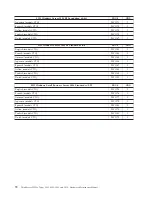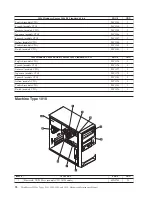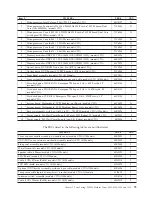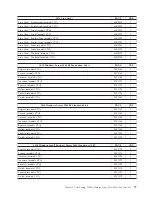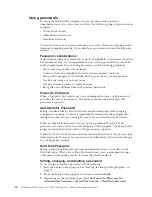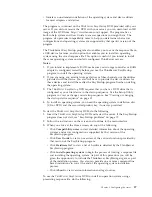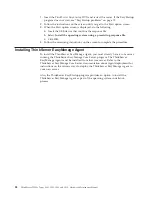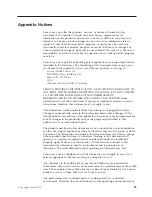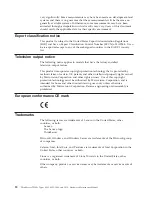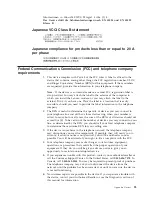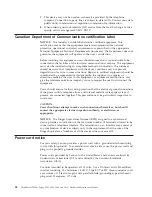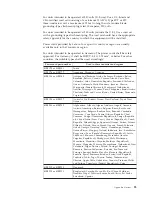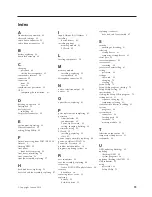
10.
Press Y when prompted to confirm the exit.
Deleting RAID volumes
This section describes how to use the Intel Matrix Storage Manager option ROM
configuration utility to delete RAID volumes.
To delete RAID volumes, do the following:
1.
Press Ctrl+I when prompted to enter the Intel Matrix Storage Manager option
ROM configuration utility during the server startup.
2.
Use the up and down arrow keys to select
Delete RAID Volume
and press
Enter.
3.
Use the arrow keys to select the RAID volume to be deleted and press Delete.
4.
When prompted, press Y to confirm the deletion of the selected RAID volume.
Deleting a RAID volume will reset the hard disk drives to non-RAID.
5.
After deleting a RAID volume, you can:
v
Return to step 2 to delete additional RAID volumes.
v
See “Creating RAID volumes” on page 83 for RAID volume creation.
v
Use the up and down arrow keys to select
Exit
and press Enter.
v
Use the up and down arrow keys to select
Reset Disks to Non-RAID
and
press Enter.
a.
Use the arrow keys and the space key to mark the hard disk drives to be
reset, and then press Enter to complete the selection.
b.
When prompted, press Y to confirm the reset action.
c.
After completing the Reset Disks to Non-RAID function, you can:
– Return to step 2 to delete additional RAID volumes.
– See “Creating RAID volumes” on page 83 for RAID volume creation.
– Use the up and down arrow keys to select
Exit
and press Enter.
Updating system programs
This section contains information about updating the POST/UEFI and recovering
from a POST/UEFI update failure.
This section provides information about the following topics:
v
“Using system programs”
v
“Updating (flashing) the UEFI from a disc” on page 85
v
“Updating (flashing) the UEFI from your operating system” on page 85
v
“Recovering from a POST/UEFI update failure” on page 86
Using system programs
System programs are the basic layer of software built into your server. System
programs include the POST, the UEFI code, and the Setup Utility program. The
POST is a set of tests and procedures that are performed each time you turn on
your server. The UEFI is a layer of software that translates instructions from other
layers of software into electrical signals that the server hardware can execute. You
can use the Setup Utility program to view and change the configuration and setup
of your server.
Your server system board has a module called electrically erasable programmable
read-only memory (EEPROM, also referred to as flash memory). You can easily
84
ThinkServer TS200v Types 0981, 0992, 1008, and 1010: Hardware Maintenance Manual
Содержание ThinkServer TS200v
Страница 1: ......
Страница 2: ......
Страница 3: ...ThinkServer TS200v Types 0981 0992 1008 and 1010 Hardware Maintenance Manual ...
Страница 28: ...22 ThinkServer TS200v Types 0981 0992 1008 and 1010 Hardware Maintenance Manual ...
Страница 34: ...28 ThinkServer TS200v Types 0981 0992 1008 and 1010 Hardware Maintenance Manual ...
Страница 84: ...78 ThinkServer TS200v Types 0981 0992 1008 and 1010 Hardware Maintenance Manual ...
Страница 107: ......
Страница 108: ...Part Number XXXXXX Printed in USA 1P P N XXXXXX ...

